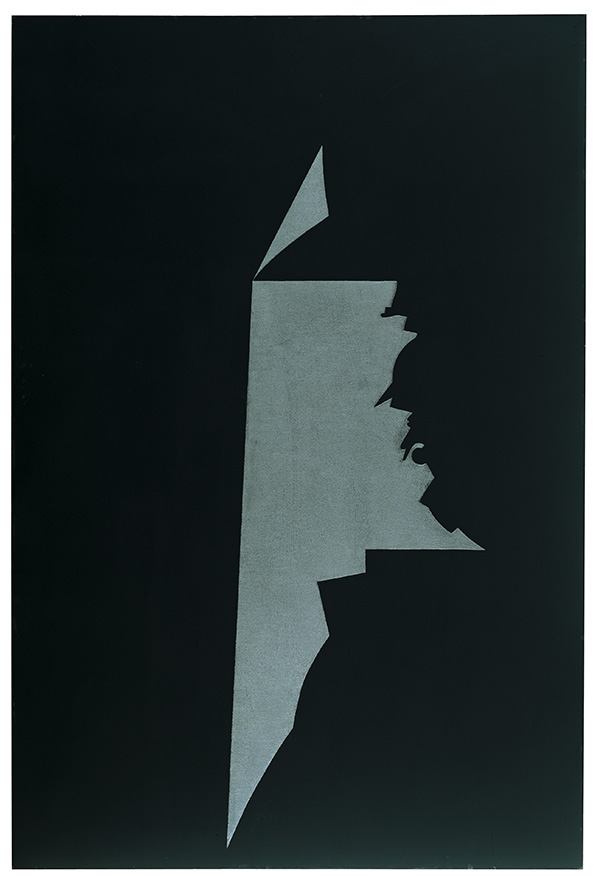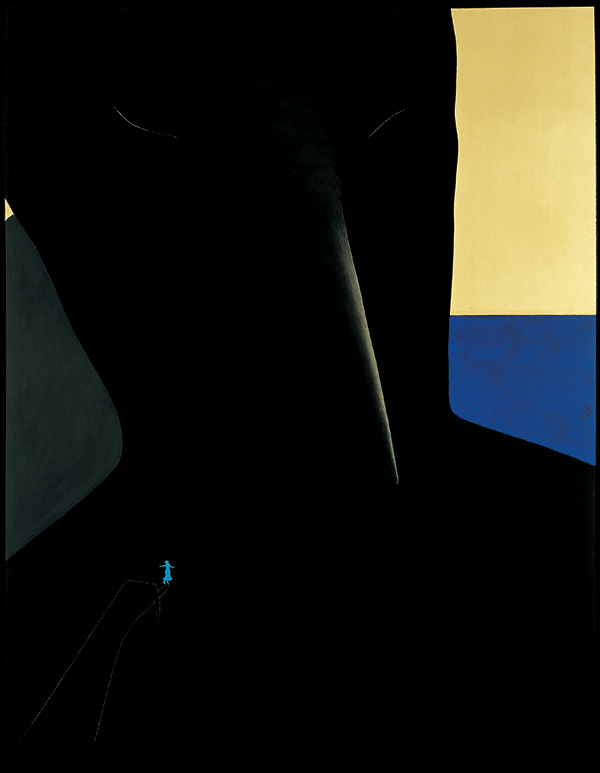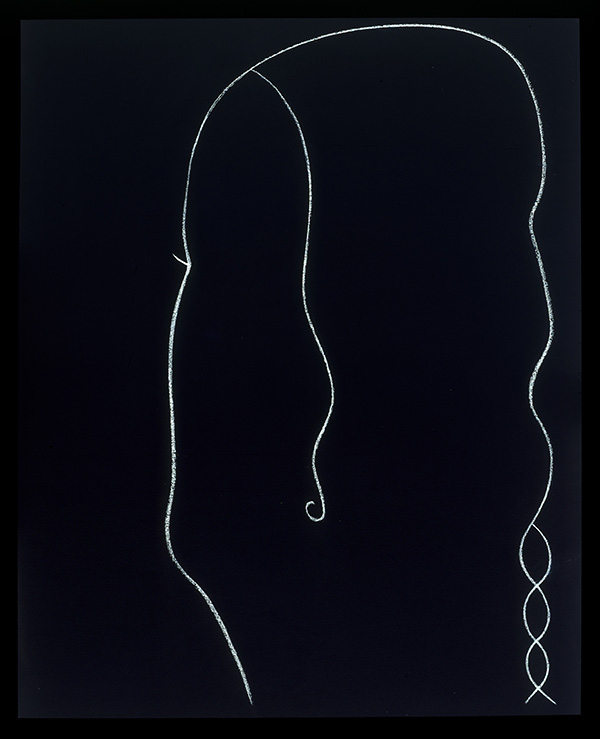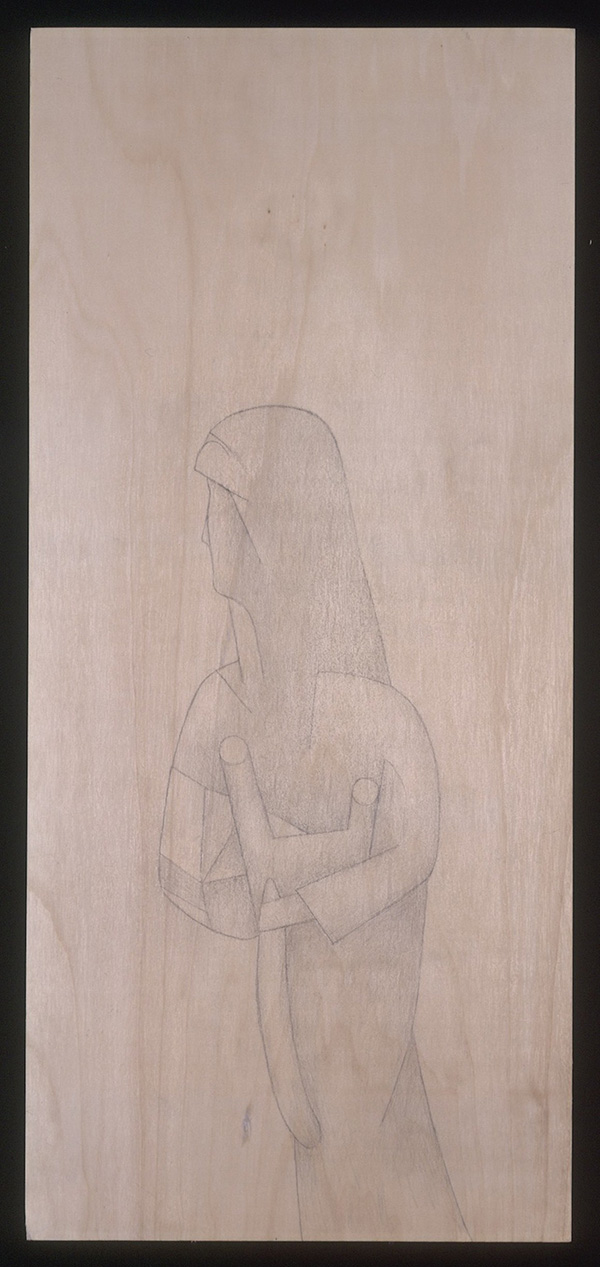ART CITIES:London-Gino De Dominicis
 Gino De Dominicis worked in a variety of mediums including sculpture, painting, film, and installation. He was obsessed with immortality and invisibility, he purposely shrouded himself in mystery and stood apart from popular artistic trends. He became a cult figure in Europe during his lifetime, and the legend has continued to grow since his death. Fueled by the artist’s eccentricities, numerous myths surround his biography.
Gino De Dominicis worked in a variety of mediums including sculpture, painting, film, and installation. He was obsessed with immortality and invisibility, he purposely shrouded himself in mystery and stood apart from popular artistic trends. He became a cult figure in Europe during his lifetime, and the legend has continued to grow since his death. Fueled by the artist’s eccentricities, numerous myths surround his biography.
By Efi Michalarou
Photo: Luxembourg & Dayan Gallery Archive
Gino De Dominicis, particularly in later years, exhibited infrequently and rarely allowed his work to be photographed or reproduced, for that reason the exhibition “Gino De Dominicis: Works from the Collection of Guntis Brands” at Luxembourg & Dayan Gallery in London is the opportunity to see a broad selection of De Dominicis’s work. Gino De Dominicis was born in 1947 in Ancona, Italy, he studied at a state art institute and took architecture courses at the Fine Arts Academy in Rome. Under the influence of Edgardo Mannucci, he developed his own artistic style, also took inspiration from both the Arte Povera and Transavanguardia movements. Though he hated the word “Conceptual”, his early works from the late ‘60s and early ‘70s are widely described as Conceptual or neo-Conceptual, De Dominicis, however, preferred the term “Modern Romanticism”. At his first solo exhibition in 1969, De Dominicis included an obituary poster announcing, and also predicting, his own death. He was known to fabricate facts about himself to keep an air of mystery to his name, and, when he died in 1998, people who knew him thought it was another wild rumor he had invented. His paintings are figurative and often produced using materials as basic as tempera and pencil on board. Concentrating on the human figure, De Dominicis often referenced mythical and epic leaders like Gilgamesh, the Sumerian king who sought immortality, and Urvashi, the Hindu Veda goddess of beauty. De Dominicis’ paintings convey notions of immortality, beauty, and esotericism. A mysterious element pervades these works as the figures undergo various facial and bodily compressions: noses, eyes, mouths, and eyebrows are elongated and occasionally become fine fissures, while surreal imagery such as tiny fork-like hands and beak-like crania are paired with out-of-proportion arms, torsos, and legs. For Gino De Dominicis, painting performed a primary and extraordinary function, reaffirming the legacy of the artist as a powerful and creative force. De Dominicis is also known for his controversial works, the most notorious being “Second Resolution of Immortality (The Universe is Still)” (1972). This work was forced to close after only a few hours on display at the opening of the Venice Biennale. He participated in several other Biennales in Paris (1971 and 1973) and Venice (1980, 1990, 1995, and 1997). In later years, De Dominicis drew sketches of figures with elongated and surreal features. In the final years of his career, he took up portraiture. De Dominicis died in 1998.
Info: Luxembourg & Dayan Gallery, 2 Savile Row, London, Duration: 4/10-8/12/17, Days & Hours: Tue-Fri 11:00-17:00, Sat 12:00-16:00, www.luxembourgdayan.com




